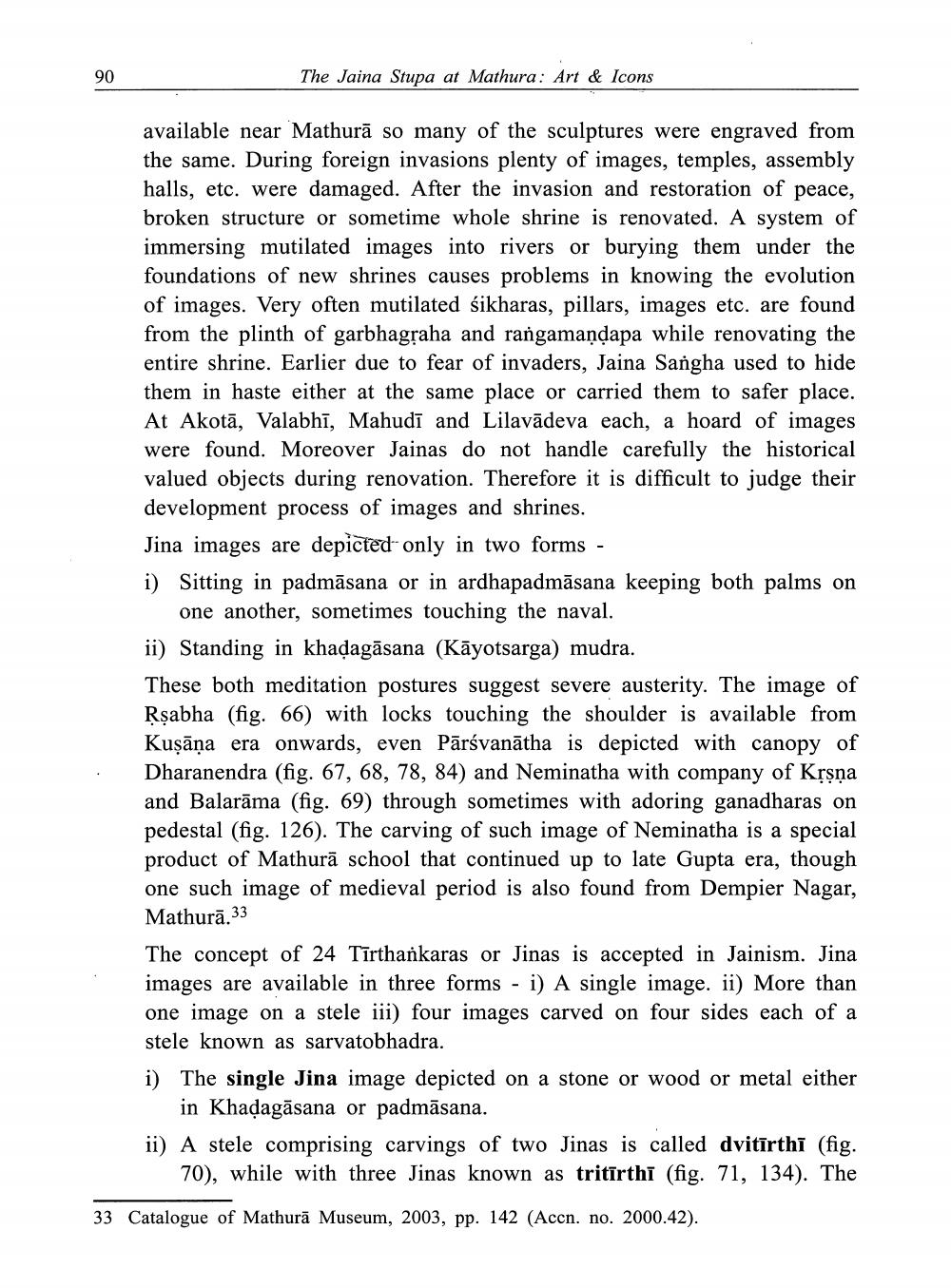________________
90
The Jaina Stupa at Mathura: Art & Icons
available near Mathurā so many of the sculptures were engraved from the same. During foreign invasions plenty of images, temples, assembly halls, etc. were damaged. After the invasion and restoration of peace, broken structure or sometime whole shrine is renovated. A system of immersing mutilated images into rivers or burying them under the foundations of new shrines causes problems in knowing the evolution of images. Very often mutilated śikharas, pillars, images etc. are found from the plinth of garbhagraha and rangamandapa while renovating the entire shrine. Earlier due to fear of invaders, Jaina Sangha used to hide them in haste either at the same place or carried them to safer place. At Akotā, Valabhī, Mahudī and Lilavādeva each, a hoard of images were found. Moreover Jainas do not handle carefully the historical valued objects during renovation. Therefore it is difficult to judge their development process of images and shrines. Jina images are depicted only in two forms - i) Sitting in padmāsana or in ardhapadmāsana keeping both palms on
one another, sometimes touching the naval. ii) Standing in khadagāsana (Kāyotsarga) mudra. These both meditation postures suggest severe austerity. The image of Rsabha (fig. 66) with locks touching the shoulder is available from Kusāna era onwards, even Pārsvanātha is depicted with canopy of Dharanendra (fig. 67, 68, 78, 84) and Neminatha with company of Krsna and Balarama (fig. 69) through sometimes with adoring ganadharas on pedestal (fig. 126). The carving of such image of Neminatha is a special product of Mathurā school that continued up to late Gupta era, though one such image of medieval period is also found from Dempier Nagar, Mathurā.33 The concept of 24 Tīrthankaras or Jinas is accepted in Jainism. Jina images are available in three forms - i) A single image. ii) More than one image on a stele iii) four images carved on four sides each of a stele known as sarvatobhadra. i) The single Jina image depicted on a stone or wood or metal either
in Khadagāsana or padmāsana. ii) A stele comprising carvings of two Jinas is called dvitīrthi (fig.
70), while with three Jinas known as tritīrthi (fig. 71, 134). The
33 Catalogue of Mathurā Museum, 2003, pp. 142 (Accn. no. 2000.42).




